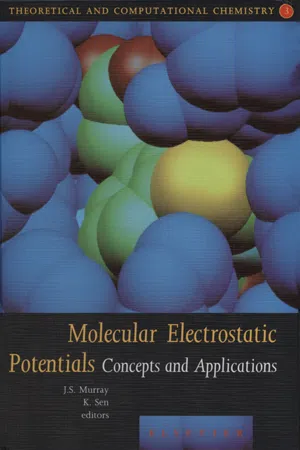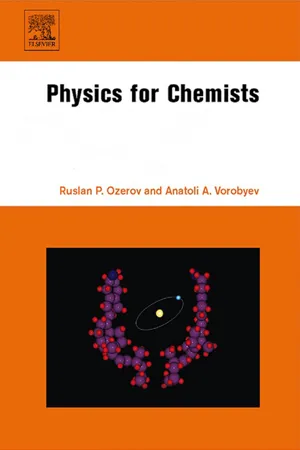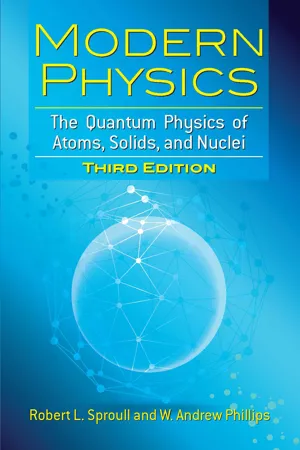Chemistry
Lattice Energy
Lattice energy is the energy released when gaseous ions come together to form a solid ionic compound. It is a measure of the strength of the ionic bonds within the crystal lattice. The magnitude of lattice energy is influenced by the charges of the ions and the distance between them.
Written by Perlego with AI-assistance
Related key terms
Related key terms
1 of 4
Related key terms
1 of 3
4 Key excerpts on "Lattice Energy"
- R.A. Mackay(Author)
- 2017(Publication Date)
- CRC Press(Publisher)
The factors which determine whether a compound is ionic or covalent may thus be isolated and discussed. These factors will be examined in turn starting with the Lattice Energy U which is the most important exothermic term in the cycle. Then the endothermic terms—the ionization potential, the electron affinity and the heats of atomization—will be examined. 5.3 The Lattice Energy The energy change when the gaseous ions are brought together from infinite separation to their equilibrium distances in the solid is the Lattice Energy, U. That is, U is the heat of the reaction (for an AB solid) A (gas) z + + B (gas) z − → A z + B (solid) z − U This energy arises from electrostatic interactions between the ions. When the geometry of the solid array of ions is known, the Lattice Energy may be calculated. The method may be illustrated by considering the square two-dimensional array of ions shown in Fig. 5.6. Any one cation in a square array of interatomic distance r has four anions at a distance r as nearest neighbours. The electrostatic potential energy between these ions is 4 Z + Z – e 2 /4π∊ 0 r, where Z + and Z + are the positive and negative charges on the ions (assuming an AB stoichiometry), e is the charge on the proton and ∊ 0 is the permittivity of a vacuum. The next-nearest neighbours to the given cation are four cations at a distance √ 2 r and a repulsion exists between the given cation and these ions of 4 (Z +) 2 e 2 / 4 π ϵ 0 √ 2 r. Then come four more cations at 2 r, eight anions at √ 5 r and so forth. The total electrostatic energy of a cation in this square array is thus: F IG. 5.6 Two-dimensional analogue of a crystal. lattice E = 4 e 2 (Z +) (Z −) / 4 π ϵ 0 r + 4 e 2 (Z +) 2 / 4 π ϵ 0 √ 2 r + 4 e 2 (Z +) 2 / 8 π ϵ 0 r + 8 e 2 (Z +) (Z −) / 4 π ϵ 0 √ 5 r + … = − Z 2 e 2 / 4 π[--=PLG- eBook - ePub
Molecular Electrostatic Potentials
Concepts and Applications
- J.S. Murray, K. Sen(Authors)
- 1996(Publication Date)
- Elsevier Science(Publisher)
[20] .In the general case of an ionic substance composed of structural units the electrostatic interaction term Eel is defined by:where NA is the Avogadro number and the factor ½ eliminates the duplication of electrostatic interaction. The Ep terms correspond to the potential energies resulting from the interactions of a cation and of an anion with the rest of the lattice. Those interactions are easily expressed in terms of the electrostatic potential produced by the crystal at the point where are located the cation and the anion [20] :The determination of those electrostatic potentials then becomes the key to the calculation of lattice energies and has therefore been the subject of much attention in solid state physics as well as in surface chemistry.The electrostatic potential at a given point of the crystal is estimated from the classical summation of the charge effects originally developed by Madelung [21] and Ewald [22] . A modified model due to Evjen [23] and allowing for appropriate fractions of charges to be put on surface and corner positions can be easily adapted to the calculation of potentials in semi-infinite crystals. Other methods have been proposed [24 –30 ] and most of them are summarized in a comprehensive review by Tosi [31] .Those methods have been used for the calculation of electrostatic potentials either in the bulk, or at the surface of standard or defective crystals and alloys. Progress in the modelling of ionic crystals can be followed from the use of formal point charges centered on the atoms to the incorporation of computed charges taken from semi-empirical or ab initio quantum calculations, and eventually to the use of ab initio-based operators to represent the Ewald potential energy of ionic lattices. - eBook - ePub
- Ruslan P. Ozerov, Anatoli A. Vorobyev(Authors)
- 2007(Publication Date)
- Elsevier Science(Publisher)
collective excitations . Hence, in modern terminology, lattice heat capacity is a development of collective excitation in solids, i.e., the heat energy goes to phonon excitation (see below).Participation of electron excitations in heat capacity is limited by quantum statistics laws (refer to Section 9.2.2 ). As only a small part of the electrons takes part in excitation, the electronic heat capacity usually makes a very small addition in comparison with the lattice one.In a polycrystalline sample consisting of a large number of microcrystals, ideally—randomly dispersed in space—the resulting picture is averaged. As a result, the function g (ω ), presents the projection of all dispersion branches to the axis of frequencies (phonon spectrum). It describes the distribution of oscillations on frequencies: product g (ω )dω gives the number of oscillations dz falling on an interval dω . In Figure 9.19 the experimentally measured function g (ω ) for aluminum is given as an example.The fluctuation distribution function determines the internal energy of a crystal:U = ∫(9.3.7)ɛ ¯g( ω )d ω ,(9.3.7)whereɛ ¯is an averaged oscillation energy.The dispersion curves and g (ω ) function can be obtained by neutron scattering methods.9.3.2 The heat capacity of crystals
Heat capacity was introduced in Section 3.4.3 as the heat energy capable of heating a body by 1 grad. For an ideal gas in molecular kinetic theory the mole heat capacity appeared to be equal toC V=R andi ef2C p=R ,2i ef+ 2where i ef is the effective number of a gas molecule’s degrees of freedom. In this case i ef turns out to be the sum of translational, rotational and oscillation movements; in the latter i ef, osc = 2 because oscillation simultaneously possesses potential and kinetic energy.Apply these representations to a solid. For this purpose we should first analyze the character of possible movements of the molecules in it. Clearly, translational motion is excluded in this case. The rotation of molecules in a crystal is basically possible. For example, in crystal NH4 Cl a group NH4 + - eBook - ePub
Modern Physics
The Quantum Physics of Atoms, Solids, and Nuclei: Third Edition
- Robert L. Sproull, W. Andrew Phillips, W. Andrew Phillips(Authors)
- 2015(Publication Date)
- Dover Publications(Publisher)
* This energy is commonly expressed in electron volts per molecule (or in kilocalories per kilogram molecular weight).The first step in estimating the cohesive energy is to calculate the energy required to produce a K+ and a Cl– ion from the neutral atoms. This step requires a net expenditure of 0.52 eV per pair, which is the ionization potential of K (4.34 eV) minus the electron affinity of CI (3.82 eV).The next step is to compute the energy – EL per ion pair that is given off when these ions are brought together to form the crystal lattice. This energy is composed principally of the same two terms as in the KC1 molecule, namely, an electrostatic attraction and a repulsion originating from the difficulty of interpenetration of ion cores. But there is a difference in the electrostatic term because of the interaction of a given ion with all the other ions of the crystal. A positive ion is surrounded closely by six negative ions, and the attraction is strong to these nearest neighbors. It is also surrounded by twelve next nearest neighbors of positive sign (which give a repulsion), and so on. Therefore the effects of all the other ions on the one in question must be summed to learn how tightly it is held in the crystal.This summation depends only on the geometrical arrangement of ions in the crystal and on the charge of the ions, not upon other properties of the ions. The electrostatic energy per molecule for diatomic structures with ionic charge q iswhere α is the Madelung constant. Multiplication by the Madelung constant has modified the expression for the interaction of two ions so that it is correct for the interaction of all the ions in the lattice. The value of α for the KCl structure is 1.748; for other simple structures α lies between 1.6 and 1.8. Since q equals e
Index pages curate the most relevant extracts from our library of academic textbooks. They’ve been created using an in-house natural language model (NLM), each adding context and meaning to key research topics.
Explore more topic indexes
Explore more topic indexes
1 of 6
Explore more topic indexes
1 of 4



